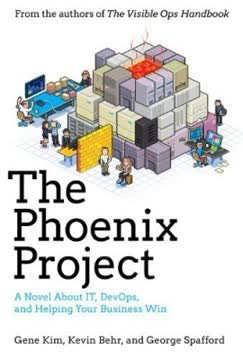Key Takeaways
1. Embrace Empathy: Sell the Way You Buy
Every day salespeople find themselves in a similar moral and operational dilemma, executing tactics they sense are outdated, ineffective, and inconsistent with their personal philosophy.
The Golden Rule of Sales. The core principle of modern selling is to treat your customers as you would like to be treated. This means abandoning outdated, pushy tactics and adopting an empathetic approach that prioritizes the customer's needs and experience. By understanding your own buying behaviors, you can better tailor your sales strategies to resonate with modern buyers.
Question Everything. Don't blindly follow outdated sales playbooks. Instead, constantly question the effectiveness of your tactics and seek to understand the "why" behind customer behavior. This involves studying human psychology, behavioral science, and the emotional drivers that influence purchasing decisions.
The Cobra Kai Paradox. Avoid outdated, aggressive sales tactics that you yourself would find off-putting. Instead, strive to create a more human and empathetic sales process that builds trust and fosters long-term relationships. This shift requires a conscious effort to align your sales motion with your personal values and the way you prefer to be sold to.
2. Attention is Scarce: Earn It with Value
As the perceived value of a product increases, the degree of attention or mindshare you need from a customer in order to take notice decreases.
The Attention/Value Matrix. In today's crowded marketplace, capturing customer attention is a constant battle. The key is to understand the relationship between the perceived value of your solution and the amount of attention required to convert a buyer. High-value solutions require less attention-grabbing, while low-value solutions need more aggressive outreach.
Break Through the Noise. Most products fall into the "sea of sameness," requiring creative sales and marketing strategies to stand out. This involves crafting compelling messaging, targeting the right buyers, and delivering a unique and memorable experience. Focus on moving from the "sea of sameness" to the "innovative minority" by combining a mainstream value proposition with a high-impact delivery mechanism.
Prescription over Reaction. Don't assume buyers know exactly what they need. Instead, take a prescriptive approach by guiding them through the buying process and reframing their requirements to align with your solution. This involves challenging their existing beliefs and showcasing the unique value you offer.
3. Feelings Trump Logic: Understand Buyer Biases
The truth is, as buyers we value all sorts of things about the products and services on which we spend money—things that have absolutely nothing to do with the hard returns we derive from them.
The Illusion of Rationality. While we like to think we make decisions based on logic and reason, emotions play a far greater role than we realize. Cognitive biases, such as confirmation bias and status quo bias, can lead to irrational purchasing decisions. Modern sellers must understand these biases and tailor their approach accordingly.
Value Beyond ROI. Don't focus solely on return on investment (ROI). Instead, recognize that buyers are driven by subjective feelings of value, such as the desire to stand out, feel secure, or enjoy a sense of well-being. Tap into these emotional motivators to create a stronger connection with your customers.
System 1 vs. System 2. Human decision-making is governed by two systems: System 1 (fast, intuitive) and System 2 (slow, deliberate). System 1 often dominates, leading to decisions based on emotions and impulses. Successful sellers understand how these systems interact and craft their messaging to appeal to both.
4. Experience is Paramount: Create Lasting Impressions
It doesn’t matter what you sell or who you sell it to, the experience a customer has with your brand is your product.
Beyond the Product. In today's market, the customer experience is just as important as the product itself. Every interaction, from initial contact to ongoing support, shapes the customer's perception of your brand. Focus on creating a positive and memorable experience at every touchpoint.
The Power of Listening. Listening is a fundamental skill for building trust and rapport with customers. By actively listening to their needs and concerns, you can demonstrate empathy and tailor your approach to their specific situation. Top-performing sales reps spend more time listening than talking.
Advocacy is Key. Customer referrals and testimonials are incredibly powerful. Encourage satisfied customers to share their experiences and leverage their advocacy to generate new leads. Remember, people trust recommendations from peers more than marketing messages.
5. High-Impact Messaging: Cut Through the Noise
This simple question should be the centerpiece of every organization’s sales and marketing playbook.
The Power of Clarity. In a world of information overload, clear and concise messaging is essential. Avoid jargon and focus on communicating the core value proposition of your solution in a way that resonates with your target audience. A simple question, "What do you do?" should be easily answered.
Polarization and Juxtaposition. Use polarizing messages to attract your ideal customers and repel those who are not a good fit. Juxtapose your solution with the problem it solves to create a clear and compelling contrast. Provocative questions can also engage the customer and encourage them to think critically about their needs.
Conviction and Storytelling. Lead with what you believe and communicate your passion for your solution. Use storytelling to connect with customers on an emotional level and make your message more memorable. People connect with the "why" behind your product, not just the "what."
6. Mindful Discovery: Ask the Right Questions
Sales discovery is arguably the single most important part of the interaction we have with our customers.
Discovery is Key. The discovery phase is the most critical part of the sales process. It's where you uncover customer needs, identify pain points, and position yourself as a trusted advisor. Effective discovery requires careful planning, active listening, and a genuine desire to understand the customer's perspective.
Three Types of Insights. There are three types of customer insights: known-spoken, known-unspoken, and unknown-unspoken. Mastering the art of uncovering known-unspoken and unknown-unspoken insights is crucial for establishing credibility and building trust.
The Pain Spectrum. Customer pain exists on a spectrum, ranging from functional/technical to quantifiable/financial to personal/strategic. Understanding the different types of pain and their impact on the customer is essential for crafting a compelling value proposition.
7. Objection Handling: Address the Real Concerns
These findings on the neurobiology of storytelling are relevant to business settings.
EQ is Essential. Emotional intelligence (EQ) is crucial for handling customer objections effectively. This involves recognizing your own emotions and those of others, and responding appropriately based on the circumstances. High-EQ sellers are better able to understand the underlying intent of objections and address the customer's real concerns.
Understanding Intent. Before responding to an objection, take the time to understand the customer's intent. Are they seeking clarification, expressing doubt, or trying to derail the sale? Tailor your response to address the specific intent behind the objection.
Tactics and Approach. There are many tactics for handling objections, from resolving with empathy to turning weaknesses into strengths. The key is to choose the right tactic for the situation and deliver it with authenticity and conviction.
8. Science, Empathy, and Execution: The Modern Selling Trinity
In essence, an approach that harmonized the key principles of science, empathy, and execution.
A Holistic Approach. Modern selling requires a holistic approach that combines science, empathy, and execution. This involves understanding the psychological principles that influence buying behavior, connecting with customers on an emotional level, and consistently executing proven sales tactics.
Continuous Learning. The sales landscape is constantly evolving. Successful sellers are lifelong learners who stay up-to-date on the latest research, trends, and best practices. This involves reading books, attending conferences, and seeking feedback from peers and mentors.
Sell the Way You Buy. The ultimate goal of modern selling is to align your sales motion with the way you yourself buy. This involves understanding your own biases, preferences, and emotional drivers, and using that knowledge to create a more human and empathetic sales process.
Last updated:
FAQ
What is Sell the Way You Buy by David Priemer about?
- Modern, science-based sales: The book introduces a modern approach to sales that combines empathy, behavioral science, and practical execution to align with how today’s buyers make decisions.
- Human-to-human focus: Priemer advocates for authentic, human-centered communication, moving away from outdated, high-pressure tactics.
- Behavioral insights: It explains how subconscious forces and cognitive biases drive purchasing decisions, and how sellers can leverage these insights.
- Actionable frameworks: Readers receive practical tools and strategies to improve messaging, objection handling, and overall sales effectiveness.
Why should I read Sell the Way You Buy by David Priemer?
- Empathy-driven selling: The book teaches how to infuse empathy into every stage of the sales process, which is crucial for connecting with empowered, skeptical buyers.
- Science-backed tactics: Priemer provides actionable advice rooted in behavioral science and neuroscience, helping sellers understand and influence buyer behavior.
- Improved sales outcomes: Readers learn to overcome buyer inertia, status quo bias, and information overload, leading to more effective and enjoyable sales conversations.
- Builds trust and credibility: The book emphasizes building trust and credibility, which are essential for long-term customer relationships and repeat business.
What are the key takeaways from Sell the Way You Buy by David Priemer?
- Empathy and emotional intelligence: High-performing salespeople excel at understanding and responding to customer emotions, not just logic.
- Buyer psychology matters: Most buying decisions are driven by feelings and cognitive biases, not just rational analysis.
- Discovery is critical: Mastering the discovery phase—uncovering customer pains, motivations, and decision processes—is essential for effective selling.
- Objection handling and messaging: The book offers advanced, empathetic tactics for handling objections and crafting compelling, customer-centric messages.
What is the "Cobra Kai Paradox" in Sell the Way You Buy by David Priemer?
- Outdated sales tactics: The paradox describes salespeople using aggressive, ineffective methods they know don’t work, similar to the harsh Cobra Kai dojo in The Karate Kid.
- Need for evolution: Just as Cobra Kai students must evolve, salespeople need to shift to more empathetic, science-informed approaches.
- Empathy vs. tradition: The paradox highlights the tension between traditional sales methods and the need for empathy and behavioral science.
- Personal values alignment: Priemer encourages sellers to align their methods with their own values and the preferences of modern buyers.
How does Sell the Way You Buy by David Priemer explain the science behind buyer decision-making?
- Dual-system thinking: The book draws on Daniel Kahneman’s System 1 (emotional, fast) and System 2 (logical, slow) thinking, showing that most buying decisions are emotional.
- Cognitive biases: It explores biases like status quo bias, confirmation bias, and loss aversion, which shape buyer behavior and resistance to change.
- Feelings over facts: Buyers often value subjective feelings and emotional motivators more than hard ROI calculations.
- Sales implications: Sellers must appeal to emotions and perceived value, not just present logical business cases.
What is status quo bias and why is it important in Sell the Way You Buy by David Priemer?
- Definition: Status quo bias is the tendency for buyers to prefer their current situation and resist change, even when better alternatives exist.
- Sales challenge: This bias creates inertia, making it difficult for sellers to persuade buyers to consider new solutions.
- Overcoming inertia: Priemer emphasizes prescriptive selling—guiding buyers through their journey and illustrating the pain of staying with the status quo.
- Disrupting comfort: Sellers must help buyers see the risks of inaction to motivate change.
What is the Attention/Value Matrix in Sell the Way You Buy by David Priemer?
- Inverse relationship: The matrix shows that as perceived product value increases, the attention required to notice it decreases, and vice versa.
- Four product categories: Products are categorized as Game Changers, Sea of Sameness, Unlucky Virtuous, and Innovative Minority based on value and attention.
- Strategic focus: Sellers must identify where their product fits and tailor marketing and sales efforts accordingly.
- Maximizing impact: The matrix helps prioritize tactics to maximize attention for less differentiated or lower-value offerings.
How does Sell the Way You Buy by David Priemer recommend handling messaging and positioning?
- Polarization: Craft messages that identify a common enemy or problem, helping ideal customers self-select and others opt out.
- Juxtaposition: Use contrast and comparison to clarify your value proposition and make your solution stand out.
- Provocative questions: Frame messaging as questions to engage buyers emotionally and mentally.
- Storytelling and conviction: Lead with strong beliefs and authentic stories to build trust and inspire action.
What are the three types of discovery insights in Sell the Way You Buy by David Priemer?
- Known-Spoken Insights: Challenges both buyer and seller are aware of and can discuss openly, such as obvious operational needs.
- Known-Unspoken Insights: Issues both parties know exist but are not openly discussed due to sensitivity or embarrassment.
- Unknown-Unspoken Insights: Problems the buyer is unaware of, which the seller can reveal through consultative questioning and expertise.
- Discovery importance: Uncovering all three types is crucial for tailoring solutions and building trust.
How does David Priemer define the "Pain Spectrum" in Sell the Way You Buy?
- Functional/Technical Pain: Operational or technical challenges, often known and openly discussed.
- Quantifiable/Financial Pain: Measurable business impacts, such as lost revenue or increased costs, which may be hidden or unrecognized.
- Personal/Strategic Pain: Emotional or strategic consequences, like job risk or market share loss, often hidden but most motivating.
- Motivating change: Addressing pains across the spectrum increases the likelihood of buyer action.
What are the top objection-handling tactics in Sell the Way You Buy by David Priemer?
- Empathy first: Acknowledge the buyer’s feelings and share how others have overcome similar objections.
- Historical perspective: Respect past experiences while guiding buyers toward future improvements.
- Reason with satisfaction: Use “because” to justify responses, increasing compliance and understanding.
- Proactive and open: Inoculate against common objections and invite hidden concerns to surface early for open discussion.
How does Sell the Way You Buy by David Priemer emphasize the role of emotional intelligence (EQ) in sales?
- EQ is critical: High EQ enables sellers to recognize and respond to the emotional drivers behind objections and decisions.
- Listening and empathy: Effective salespeople listen empathetically, clarify intent, and address both emotional and logical concerns.
- Blind spot awareness: Many people struggle to identify their own emotions, making EQ a differentiator in sales.
- Building trust: Emotional intelligence helps build deeper connections and trust, leading to more successful sales outcomes.
Review Summary
Sell the Way You Buy is highly praised for its fresh approach to sales, focusing on empathy and understanding the buyer's perspective. Reviewers appreciate Priemer's strategic, calm demeanor and practical advice. The book stands out from traditional sales literature by emphasizing trust-building and adapting to modern buying habits. Readers find it engaging, credible, and applicable to various sales situations. Many consider it a must-read for sales professionals, entrepreneurs, and team leaders, offering valuable insights for both newcomers and experienced sellers.
Similar Books










Download PDF
Download EPUB
.epub digital book format is ideal for reading ebooks on phones, tablets, and e-readers.




